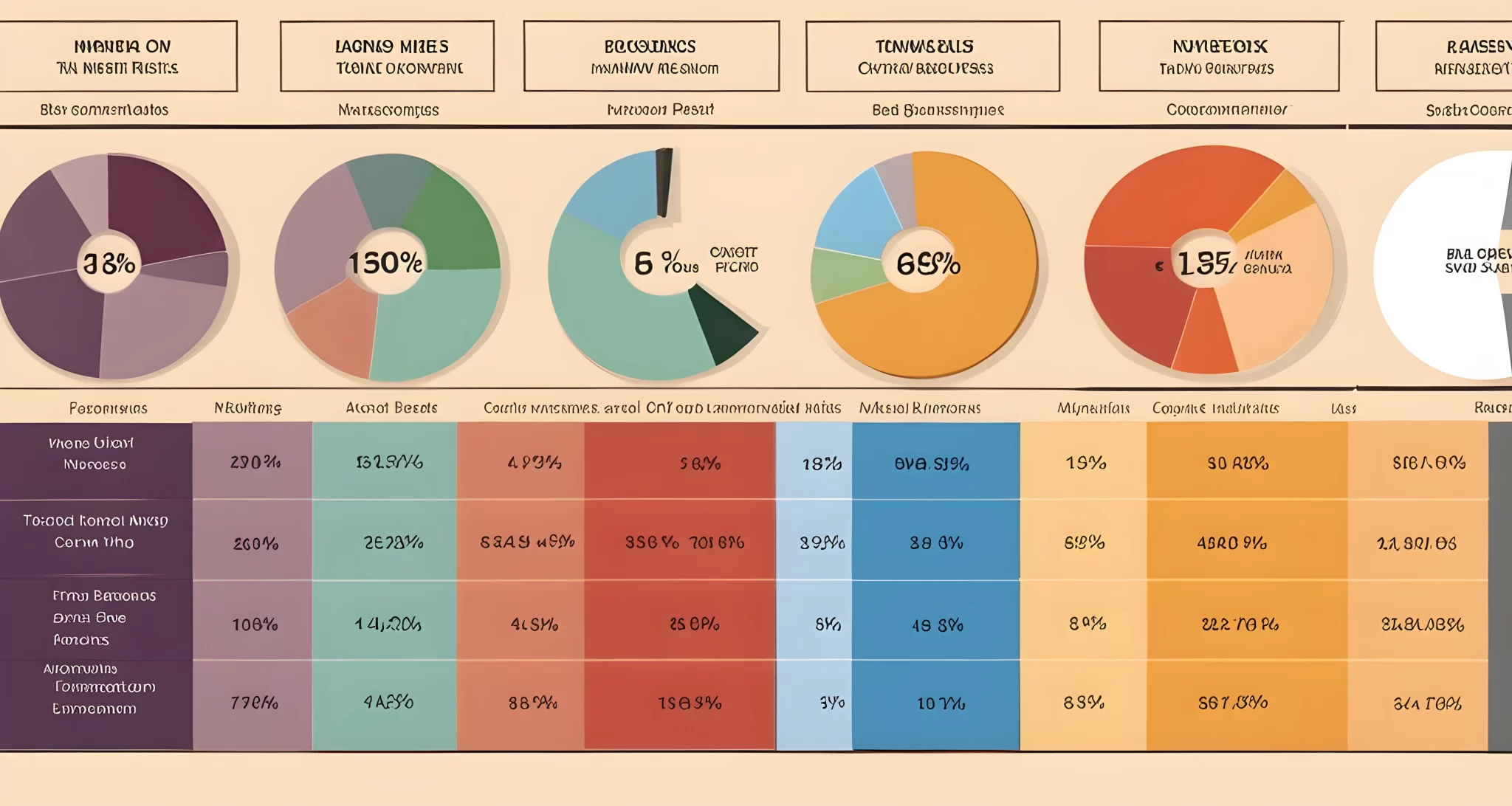Introduction to Diversifying Your Investment Portfolio
Diversifying your investment portfolio is a crucial strategy to achieve better investment outcomes. The concept of diversification involves spreading your investments across different assets, industries, countries, and risk profiles. This approach helps to reduce the risk of a permanent loss of capital and overall portfolio volatility.
By diversifying your investments, you can mitigate the impact of market volatility on your overall portfolio. This is especially important in a volatile market, where uncertainties and rapid changes can significantly affect the value of your investments. Managing these risks is essential for long-term investment success, and diversification is a key tool in effective investment risk management Effective investment risk management.
Furthermore, diversification allows you to take advantage of different market trends and economic cycles. By investing in a variety of assets and industries, you can potentially benefit from the growth of different sectors while minimizing the impact of underperformance in others.
In addition to reducing risk, diversification also provides the opportunity for potentially higher returns. By spreading your investments across different assets, you can access a broader range of opportunities for growth and income.
Overall, diversifying your investment portfolio is an essential strategy for achieving better investment outcomes. It not only helps to reduce risk but also provides the potential for higher returns and greater resilience in the face of market volatility. In the following sections, we will explore the specific benefits and drawbacks of diversification, as well as how it impacts the risk-adjusted rate of return.

Benefits of Diversification
Diversifying your investment portfolio comes with a multitude of benefits that can help you achieve better investment outcomes. By investing in a variety of assets, you can hedge against unsystematic risks, such as business or financial risks, and protect against losses. This is particularly important for older investors who need to preserve their wealth and minimize the impact of market downturns. Diversification can provide a level of stability and security that may not be present when investing in a single asset or market.
Furthermore, diversification can increase the risk-adjusted rate of return for an investor. This means that by spreading your investments across different assets, you can potentially achieve a higher return for the level of risk taken. This is crucial in optimizing your investment strategy and maximizing your gains while minimizing potential losses.
In addition, diversification provides better investing opportunities due to wider exposure to various markets and industries. This can help you take advantage of growth sectors and capitalize on emerging trends, leading to potentially higher returns over time. By spreading your investments across different industries and sectors, you can reduce the impact of downturns in any particular market.
In order to effectively diversify your portfolio, it’s essential to understand different strategies for diversification. You can learn more about these strategies by checking out this insightful article on Portfolio diversification tips. Implementing these strategies can help you achieve a well-diversified portfolio that offers the benefits mentioned above.
Overall, diversification is a key component of successful investing. By spreading your investments across different assets, you can mitigate risks, increase potential returns, and take advantage of various market opportunities. Whether you’re a seasoned investor or just starting out, diversifying your investment portfolio is an essential strategy for achieving better investment outcomes.

Drawbacks of Diversification
While diversification offers several benefits for investors, it also comes with its own set of drawbacks. It’s important to carefully consider these potential downsides before making investment decisions.
Increased Management Requirements
One of the main drawbacks of diversification is the increased management requirements that come with having a larger portfolio. With more investments to monitor and manage, investors may find themselves spending more time and resources on their portfolio. This can lead to higher administrative costs and a greater need for active management.
Higher Transaction Fees
Another potential downside of diversification is the higher transaction fees that can result from buying and selling a larger number of assets. As investors add more securities to their portfolio, they may incur additional costs associated with trading, such as brokerage fees and commissions. These fees can eat into overall returns and reduce the effectiveness of diversification as a risk management strategy.
Missing Out on Above-Average Returns
While diversification aims to reduce risk by spreading investments across different asset classes and sectors, it also runs the risk of missing out on company- or industry-specific above-average returns. By spreading investments too thin, investors may dilute the potential for outsized gains in specific areas of the market. This can be particularly frustrating when certain investments outperform others, leading to a feeling of missed opportunities.
Overall, while diversification can be an effective strategy for managing risk in an investment portfolio, it’s important for investors to weigh these drawbacks against the potential benefits. By carefully considering the implications of diversification, investors can make informed decisions that align with their financial goals and risk tolerance.
For more information on maximizing investment returns, you can check out our article on Boosting Your Investment Earnings.

Risk-Adjusted Rate of Return and Diversification
When it comes to investing, one of the key factors that investors consider is the rate of return on their investments. However, it’s important to also take into account the level of risk associated with those returns. This is where the concept of risk-adjusted rate of return becomes crucial.
The risk-adjusted rate of return takes into consideration the level of risk involved in an investment, and compares it to the potential return. By incorporating diversification into your investment portfolio, you can improve your risk-adjusted rate of return. Diversification involves spreading your investments across different asset classes, industries, and geographic regions, which helps to reduce overall portfolio volatility.
By diversifying your portfolio, you can protect against the permanent loss of capital and improve your risk-adjusted rate of return. This means that even if one investment underperforms, the impact on the overall portfolio will be minimized. As a result, diversification can lead to better investment outcomes and increased opportunities for an investor.
In fact, research has shown that diversification can enhance investment returns by reducing risk while maintaining, or even potentially increasing, overall returns. This makes diversification a key strategy for investors looking to maximize their investment returns through effective risk management Enhancing investment returns.
Overall, incorporating diversification into your investment strategy can lead to a more favorable risk-adjusted rate of return. By spreading your investments across different assets and sectors, you can reduce the impact of market fluctuations and protect your portfolio from significant losses. This not only provides a more stable investment performance but also increases the potential for long-term growth.
In conclusion, diversification plays a crucial role in improving the risk-adjusted rate of return for investors. By reducing overall portfolio volatility and protecting against permanent loss of capital, diversification can lead to better investment outcomes and increased opportunities for investors looking to maximize their returns.

Conclusion
Diversification is a crucial strategy for investors to reduce risk and improve investment outcomes. As discussed in the previous sections, diversifying your investment portfolio offers numerous benefits, such as reducing overall portfolio volatility and providing better investing opportunities. By spreading your investments across different asset classes, industries, and geographic locations, you can lower the risk of significant losses from any one investment.
However, it’s important to acknowledge the drawbacks of diversification as well. While it can help manage risk, it also requires increased management requirements and the possibility of missing out on above-average returns. It’s a trade-off that investors must carefully consider when constructing their portfolios.
When it comes down to it, the goal of diversification is to achieve a better risk-adjusted rate of return. By minimizing the impact of any one investment on the overall portfolio performance, investors can potentially achieve more stable returns over time. This approach is particularly valuable for those with long-term investment goals.
In conclusion, diversification is a fundamental strategy for building a resilient investment portfolio. It allows investors to spread risk and access a broader range of opportunities. While it’s not without its challenges, the benefits far outweigh the drawbacks. By carefully considering the mix of assets in your portfolio and regularly reviewing your investments, you can take advantage of the power of diversification to achieve better investment outcomes.
For further information on addressing risk in your investment portfolio, check out our article on Portfolio risk evaluation.
FAQ
Why is diversifying your investment portfolio important?
Diversification helps to reduce the risk of a permanent loss of capital and overall portfolio volatility by spreading investments across different assets, industries, countries, and risk profiles.
How can diversification benefit investors?
Diversification can increase the risk-adjusted rate of return for an investor and provide better investing opportunities due to wider exposure to various markets and industries.
Are there downsides to diversification?
Yes, diversification may lead to increased management requirements, higher transaction fees, and the possibility of missing out on company- or industry-specific above-average returns.
Who can benefit the most from diversification?
Diversification is especially important for older investors who need to preserve wealth and hedge against unsystematic risks, such as business or financial risks.
